On Fractured Cutting Edges To Edge Tools – Part II
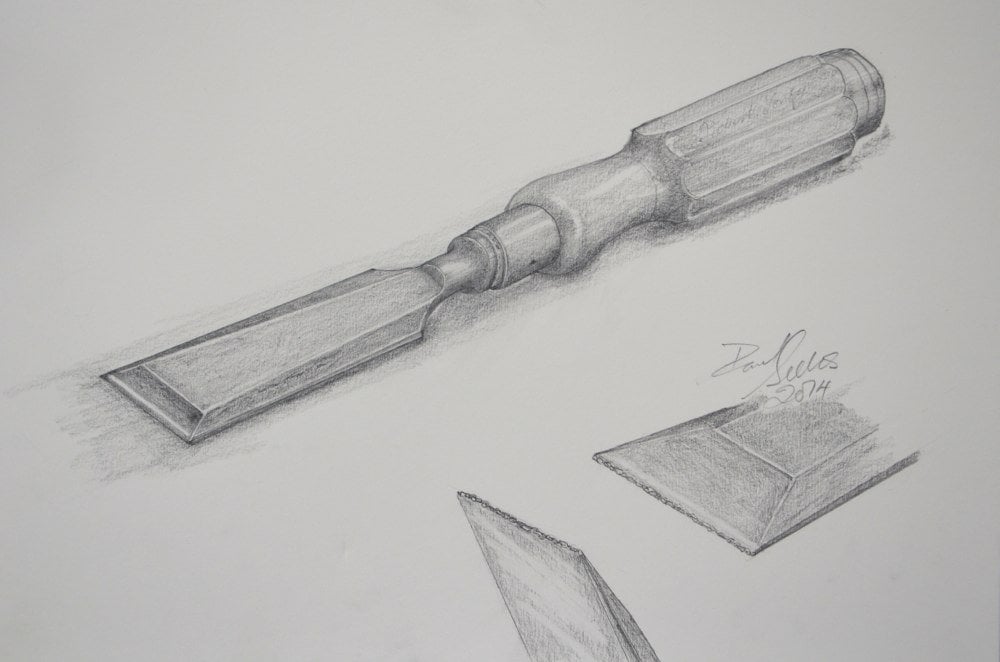
I then pared with the grain over the same area and then chopped 6 times hard onto the chisel edge with the same number of blows and equal force each time. The steel is new and specially formulated.
One of the hardest things for a chisel edge is scraping it on end along the surface of rough grain. Students do it all the time at first, until I explain how much damage they do to their chisel edges. So, I then scraped the chisels tested across the surface of the same grain as shown and applying much pressure. I did the same to all the makers including an unnamed maker from the late 1800s. The end results was surprising. Once treated so harshly, the high end chisels fared more poorly than I expected. Instead of boring photograph showing results we tested the damage by seeing how high the chisels had to be elevated on the surface of the wood before the edge bit the wood sufficient to start a cut.
In my tests all of the chisels bit the surface after sharpening at about the same angle of presentation.
The above measurement show the chisel elevated to 2mm before the bite was effective.
After the pressure and hammer tests the low end Aldi chisel and the old chisels continued to cut without further elevation. The high end chisels that fractured much more had to be elevated by 12mm to even start the cuts. This effectively meant that the surface fracture on the edge was so cratered, compensation had to be made to make the chisel effective. The old chisel, having undergone the same treatment, needed elevating only 2mm. This chisel continued working for hours afterwards and I was cutting and paring oak shoulders across end grain and paring the faces of tenons the whole time for demoing to students.
I took an angled shaving with one of the chisels I had run through the test, a reputable maker sold by high end dealers in the UK and USA. This had faired quite poorly in the tests and this is what we got.
I then took the Aldi chisel that had gone through exactly the same treatment and pared the same surface and it gave me a clean surface.
Therein was my deciding factor. It wasn’t based on cost but work. The Aldi chisel proved to be the better chisel. Others looked more prestigious and looked nice on the benchtop. Its all about choice then.
This then does tell us that the relief on the underside of all plane irons bar none was a development based on practical application and not because science itself contributed much if anything at all. A man at his bench saw that a chisel needed elevating to the work to make it work and lifted the chisel slightly higher. When the chisel was too high he took it to a stone and honed it. Now some salesman from a distant office and of unknown background or perhaps a magazine says hone to 25.000 grit on glass covered with abrasive paper and we jump through all of legalistic hoops. The scary-sharp method is just OK to get those first sharp chisel and plane edges when starting out in woodworking, but its wow factor leaves a few big questions because it’s far from an economic or practical solution to good sharpening practice. At first glance it look feasible, logical, practical. It’s not. Abrasive films are extremely expensive long term and well worth the money for some applications, but for sharpening edge tools for woodworking in general I think it is obsessive at best. It’s all become quite silly. I would say the same too for steel makes and so on.
My research shows that fracture takes place the very second the chisel touches the wood; so much so the bevel edge top fracture and the flat face bottom or under-fracture fractures equally and at the same time. Most people don’t know this.
Immediately after sharpening, chisels with dead flat faces must in some measure be elevated to engage the wood.
The less the edge fracture the less the incline needed. Within a few seconds of use, depending on the wood and the work type, the chisel elevation increases to effect a similar cut. It’s at this point then, when the rate of edge fracture diminishes dramatically, that we are given a practical working edge to chop, pare and plane with. The angle between the two faces forming the edge may well now be altered, increased as it were by fracture wear to around 40-degrees as both faces fracture along the edge equally.
Because edge fracture occurs immediately, we should be aware when we sharpen that it’s the diminished return that gives us the strength we actually need for real work not temporary or prissy work. After a few minutes of use, newly made chisels by a major UK maker of chisels left me with a chisel that I could not cut myself with. But, that said and established, they are still sharp enough for 95% of general woodworking tasks surrounding furniture making. If you indeed doubt anything I am saying. Run the same experiments. Use any plane for a few minutes on a pine board with or without knots and remove the blade. Feel the edge and tell me the truth, as you (carefully) pull the fingers perpendicular to the edge, do your fingertips glide over the edge or does the edge catch ready to cut. Do the same trial with your chisels and you then see how the wood and the work affects the router plane cutter.
I made a facsimile from styrofoam to show an enlarged approximation view of what happens at the cutting edges of edge tools.
This post may seem to ramble between chisels and router cutters and bluntness, dullness, motives and so on, but for me they are apart of the same issue. Our world is all the more fractured into tiny bytes where media projects tiny informational pockets into our lives and there is really no conclusive result because everything is negotiable in a world of no absolutes. I can’t separate the cutters from routers from chisels and planes because of the various realities uniting them. Two flat faces set at an angle creates a sharp edge. The most practical angle for this to be used and restored and at optimal strength is 30-degrees. Knives and axes, chisels and planes all have angle around 30-degrees. This may vary with shearing-cut actions as on scissors and guillotines, but generally 30-degrees is accepted universally and this is because the material dictates.


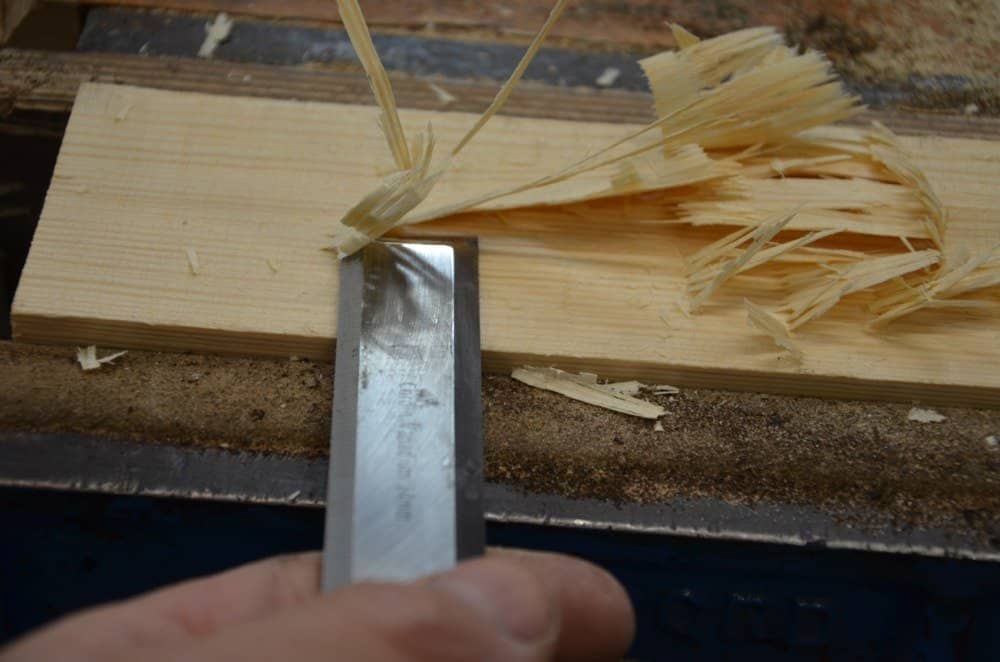
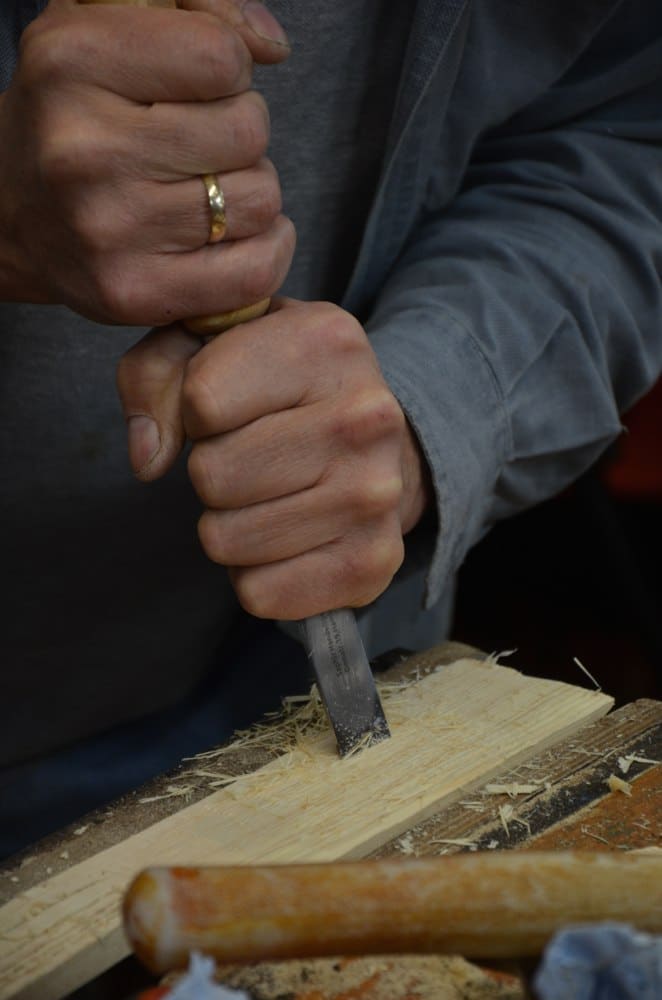
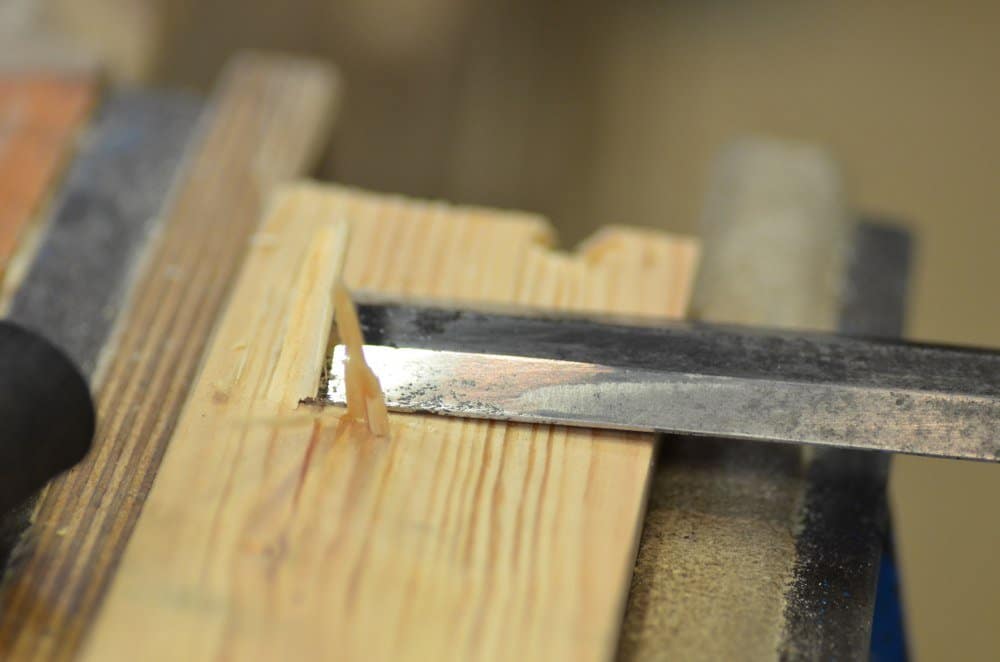
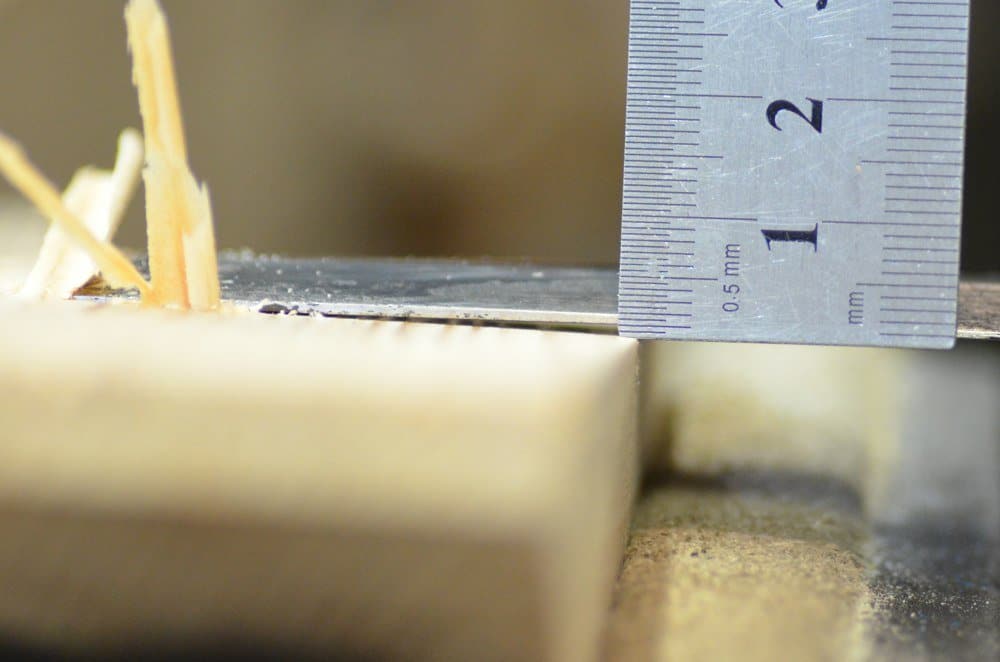
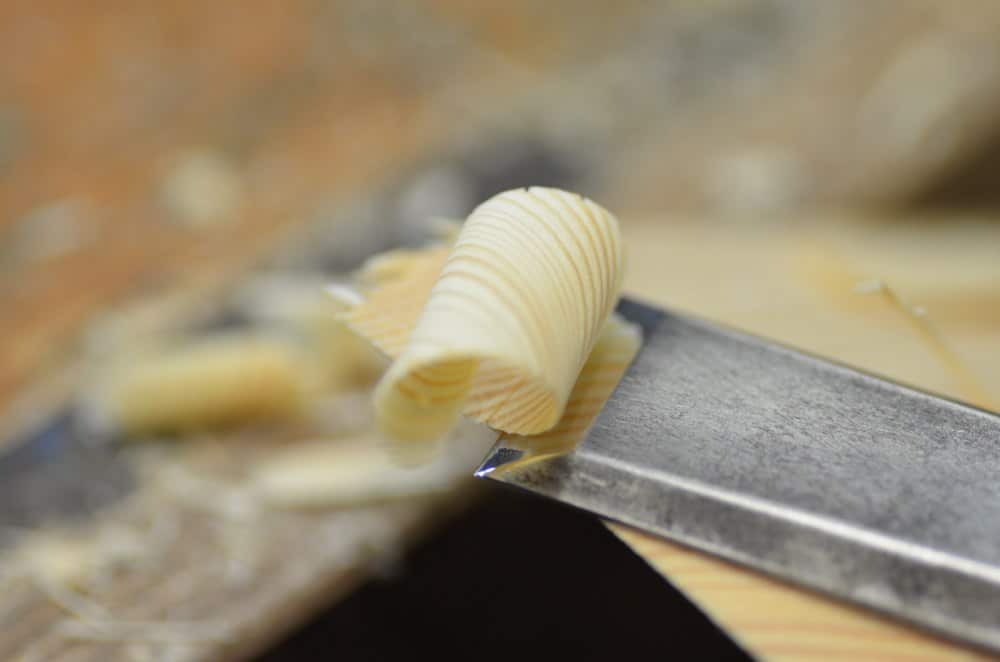

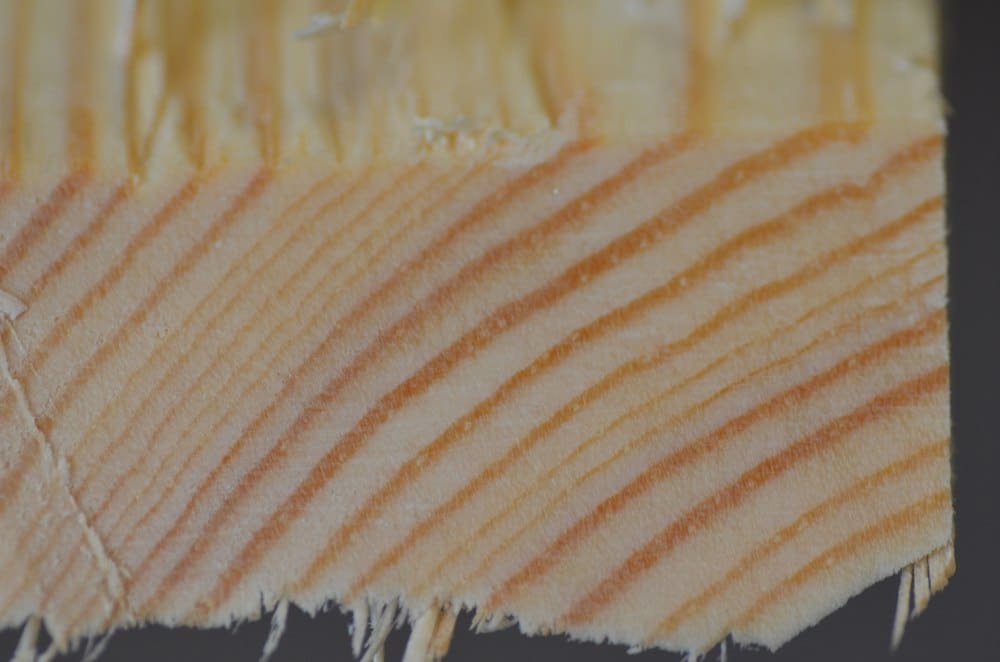
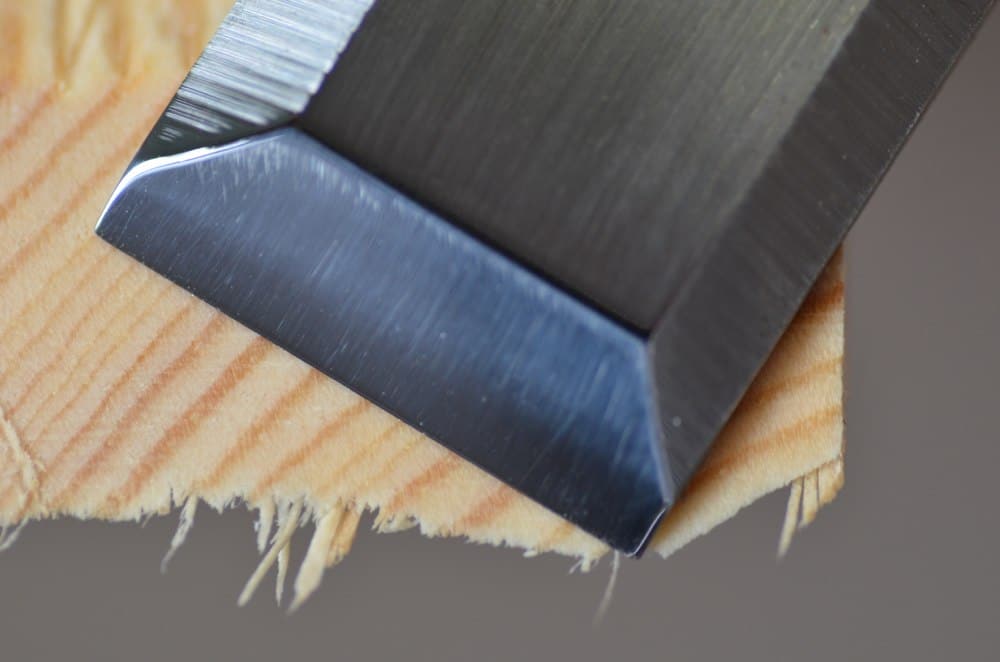
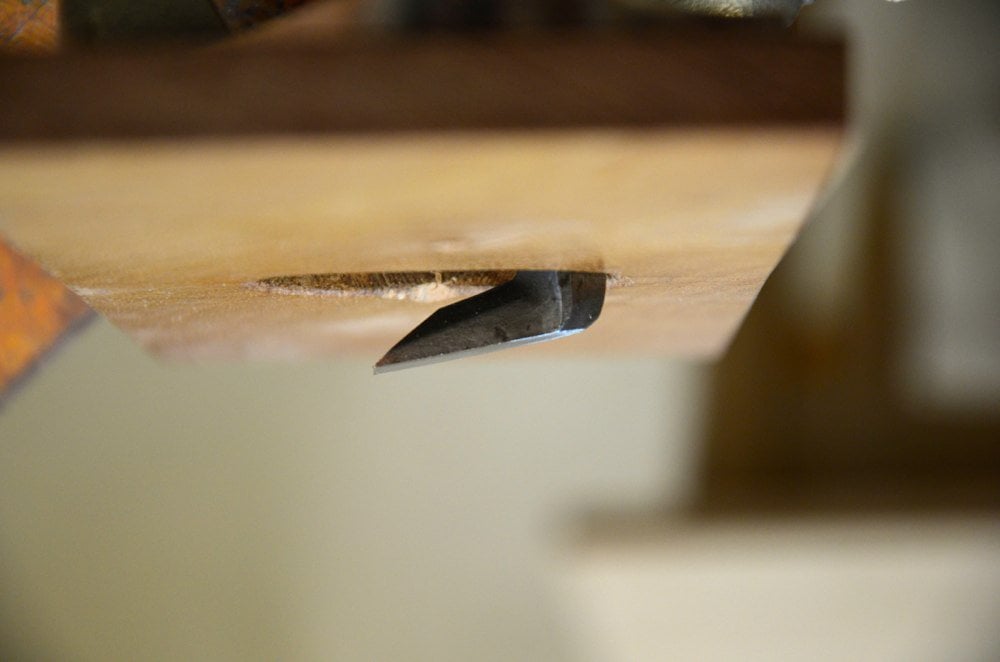
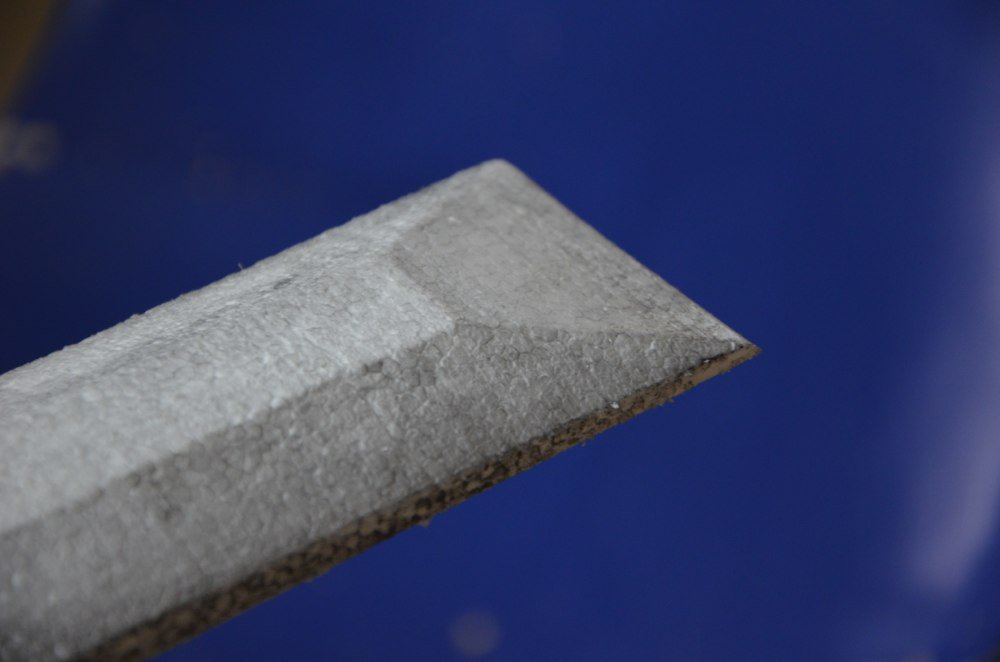
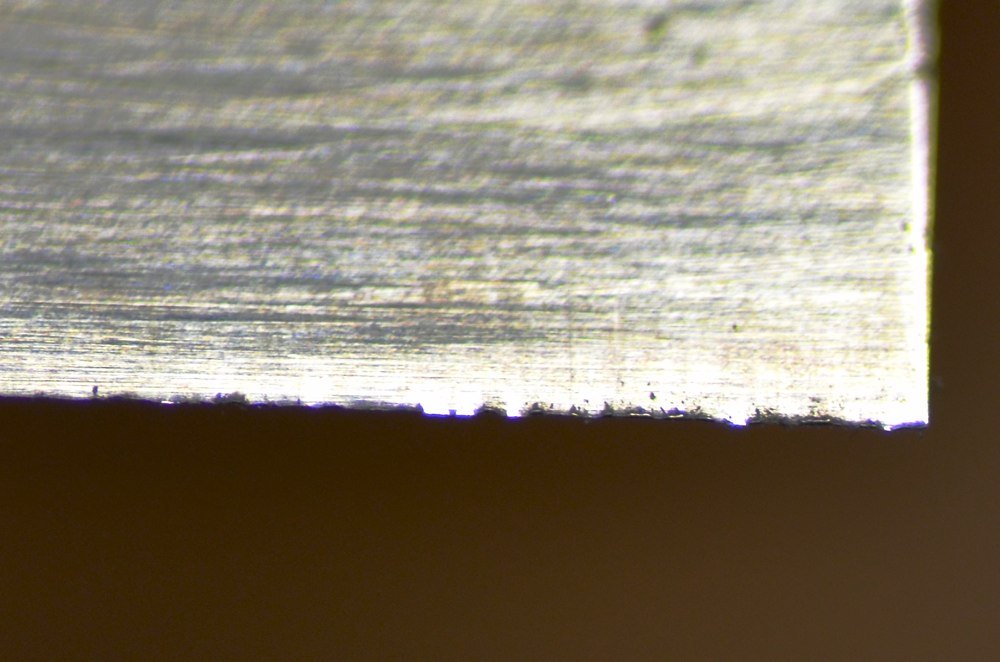
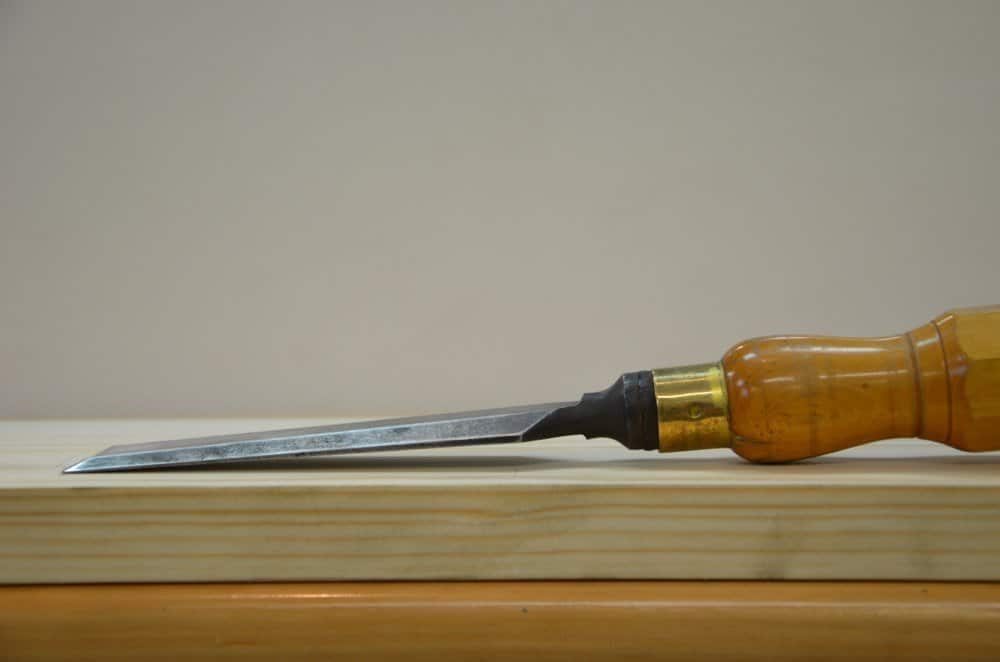
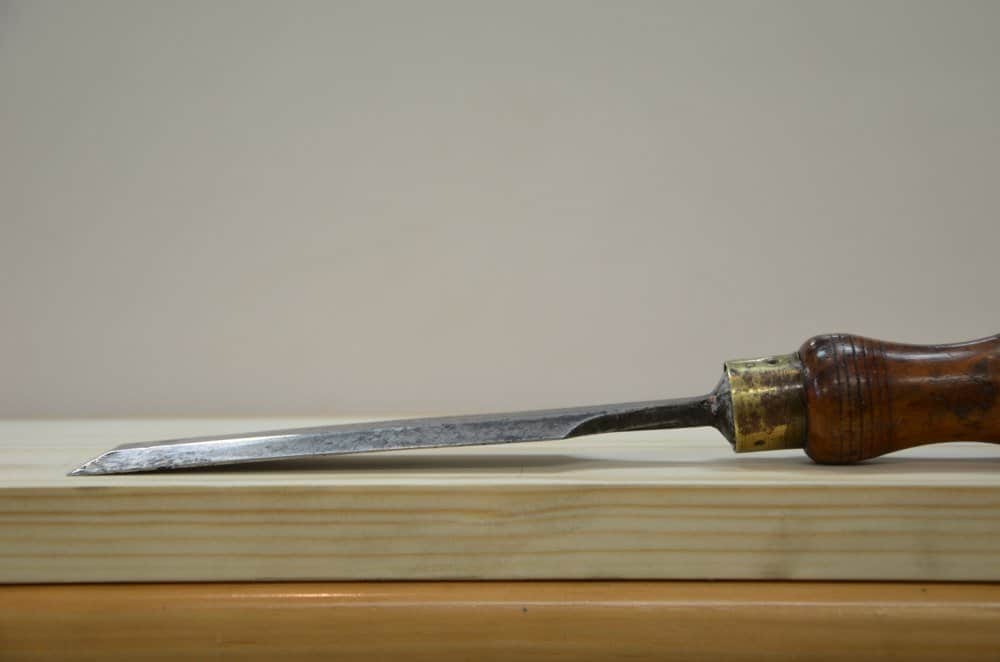
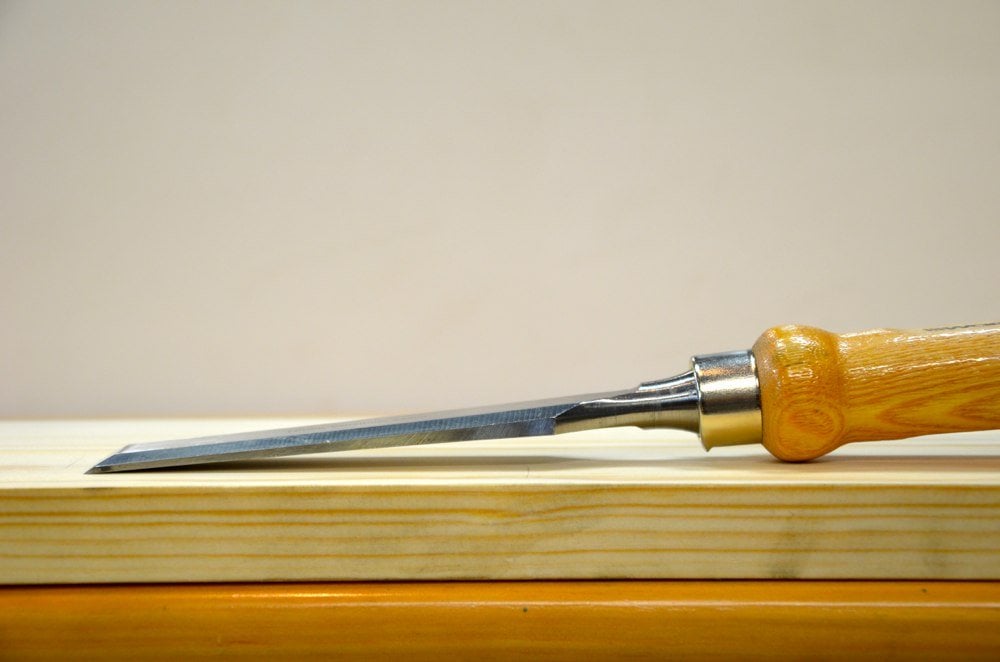

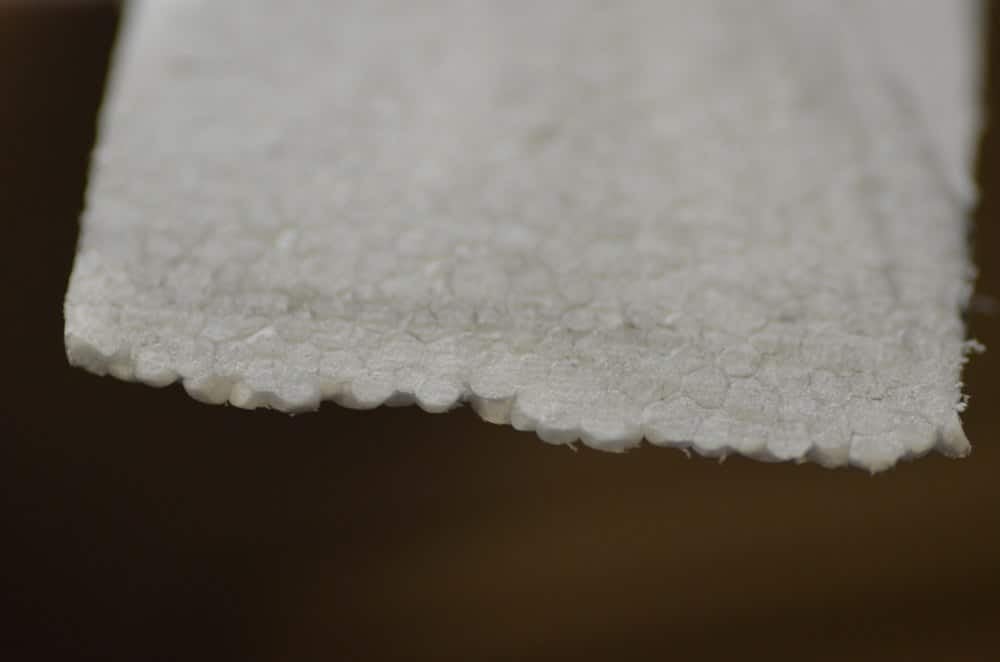
Extremely informative Paul. I have not seen this type of tool edge study before so thank you for posting it. The bevel on plane blades can be convex one would then assume although many manufacturers still suggest to grind concave or flat with a micro bevel. I round back (convex) my plane blade bevels and they cut fine. Anything wrong with that?
I’m not Paul, but I also grind my chisels and bench planes convex. I have yet to find an issue with it and I sure prefer it to concave/micro-bevel.
In other hobbies of mine, the convex grind is/was the norm and was historically determined as giving a more resistant bevel through repeated testing in real life situations. The profile of the convex grind historically depended on what the blade was supposed to cut… lower profile for soft targets (less drag but also less impact resistance) and beefier for hard targets (more impact resistance but also more drag).
Paul is an excellent teacher on this issue.
What kind of steel was in the new/modern chisels? What kind of steel is in the Aldi, Chrome-Vanadium?
Only the Aldis had CV on them.
What kind of steel is in the new/modern chisel tested?
No one says. Except Aldi’s that is. That seems like a valid question but its not really what the test is about. The test is more about edge fracture and the harder the steel the less suited they may be.
Thank you Paul, very thought provoking. I have believed for some time that the move to harder and harder steels was counter productive,since they were probably more brittle.Having got the same result with A2 blades as you show here, I’m of the same opinion.
Paul – try using and honing the ‘brittle’ chisels a few times. You may well find that their edge holding steadily improves. This phenomenon has been discussed quite a bit on several woodworking forums, and the ‘voices of experience’ always say the same thing – there’s a bit of brittleness when some chisels are brand new, which disappears with use (say three or four honings).
There is a reason for that. The small-volume makers finish-grind their chisels and plane-irons dry, and the heat generated during grinding slightly affects the temper right at the cutting edge where there isn’t a large body of steel behind it to draw the heat. The sudden expansion and contraction during grinding also causes ‘mirco-cracks’ right at the cutting edge, which in service make the edge break down more easily than usual. Once the micro-cracked steel is honed away, you’re into the ‘good stuff’ and the chisel or plane iron should then give the sort of edge retention you’d expect.
I suspect that the Aldi chisels are made by a mass production method, and machine-ground under forced flood coolant. That will greatly reduce the likelihood of micro-cracking, by removing most of the grinding-induced heat at the cutting edge.
If a ‘high-end’ chisel or plane iron seems a bit brittle when brand spanking new, use it and hone it a few times before rushing to judgement. Nine times out of ten it’ll settle down with normal use. You obviously won’t notice that phenomenon with vintage chisels, since the brand-new edge ground by the manufacturer has long since been honed away.
Perhaps you underestimate what we have done here. All of the chisels I used have been honed and used many many dozens if not hundreds of times. The Aldis have been used over five years on a daily basis and new from the packet to make sure standards remain the same and they have been consistent without fail so far. All of the chisels used thus far have been and are used in real life situations in the ordinary of life working to pare and chop and some “better quality” versions have problems. They are not unexpected or bad problems, just more expensive problems. Aldis on the other hand seem not to have a single problem at all. I don’t know what more I can do to make this real than I already have. Admittedly, scraping the edge across wood surfaces is unreal in my workshop generally, but it still has a value. That was the only part of the test I feel may have been an excess or extraordinary.
I rather took my cue from the phrase, “The steel is new and specially formulated.” I took that to mean that the steel was new – if it means a new type of steel rather than a new chisel, fair enough.
I’ve no personal experience of some of the ‘new’ steel types floating around on the edge tool market these days (all my tools are vintage or good old-fashioned O1), but comments from those with experience suggest that honing at a slightly higher angle – say 35 degrees rather than 30 – is something some of the ‘new’ steels seem to like – problems of edge brittleness are less at the higher angle. I’m sure you’ve heard this and taken it into account, but I mention it for those who may not.
Whether or not the increased honing angle makes working with the tool easier or harder is of course another can of worms!
A recent post generated many comments about consumerism and woodworking, but I think this post explains better why people buy so many super-tools and obsess over technique- False expectations. You said, “Immediately after sharpening, chisels with dead flat faces must in some measure be elevated to engage the wood,” but I think many of us expect to have chisels pare flat on their bellies. When this reality or some other aspect of performance does not mach up to our expectations, we feel we have not sharpened correctly or that there is a problem with the tool, and we go in search of the “right” method or a better tool. Had we followed a more traditional training method of working alongside someone who was experienced rather than being self-taught through books and the internet, the mentor could have said, “That is normal, do the job anyway.” This would have led to a week of skill building rather than months or years of tool buying and futile fettling. To me, this is the missing ingredient- Knowing how something should feel in the hands, how it should look in real life, and when something is good enough. Photos, no matter how good, cannot capture critical nuances and certainly cannot convey “feel.” Another example I think everyone has experienced is producing a joint that doesn’t seem as good as one wants, but then once the joint is glued up treated with dye, stain, and finish, it looks perfect. As long as there is uncertainty about what to expect at the various stages of building a piece, fear, uncertainty, and doubt can pull us off track and businesses can capitalize on it. To me, that’s not as simple or pat as “consumerism.”
Paul,
With all respect, what’s your point? Aldi makes a great chisel which is unavailable to me in the states. I got a good deal on some sorby chisels that I bought based on one of you’re older posts. (With which I am, for the record, happy with.) So where is our hope? Aldi? Vintage? Frequent sharpening?
Thanks,
Jason
Paul- Did the Narex do well? You’ve used those a lot and they are available in the states. If you get them through Lee Valley rather than other vendors, you can get them in heathen US widths rather than mm that approximate imperial.
Narex chisels did fare well and I liked them when I used them but, I must say, I did snap one 3/8″ bevel edged chisel under not too much pressure once. That is the first and only time I ever snapped or even bent a chisel in 50 years of woodworking.
Thanks again for the information. You obviously put a lot of thought into making this testing procedure as unbiased as possible. Your description of how the cutting edges degrade with use was very simple and straight forward and makes a lot of sense. I think that with this type of blog, you aren’t just teaching people how to do one task, you are showing them how to be able to think for themselves and question the information that they are getting from other sources. Most of us as individuals would not have access to the multiple styles and manufacturers of chisels as you have, so these types of real life comparisons are priceless. As I have said before, you provide us with the “real” truth. I feel like we can always trust your information because of the efforts you have made to maintain your independence from the commercialism and advertisements aspect that is so prevalent in most of the information that is available to other people like me. Thanks so much to you and your whole team. Have a great day in the shop!
I recently bought a hand crank grinder: it was cheap and I wanted a quicker way to restore tools. The back and forth motion on a xxc diamond plate was becoming a little boring. A change is as good as a rest.
I was a little over enthusiastic with the grinder. The edge ended up at much less than 25 degrees. I popped this in my scrub plane and attacked a knotty laminated pine board.
After a while, the plane wasn’t working at all. On inspection I had broken off half of the cutting iron, 2-3mm from the front edge.
Lesson learnt. 30 degrees is much stronger.
Jack
Why didn’t you just use 80- and 150 grit abrasive paper to reestablish the bevel and then go to the diamond plates for maintenance? Quick and accurate. And I never use the word boring. The modern day use of that word resounds in kids and that makes the word boring to hear. Kids, if they don’t hear it, don’t use it so best that it never be heard. Usually it’s an excuse for being uninspired and especially is that so when a parent or teacher uses it in front of kids. Life is too full of fascinating things to ever get bored.